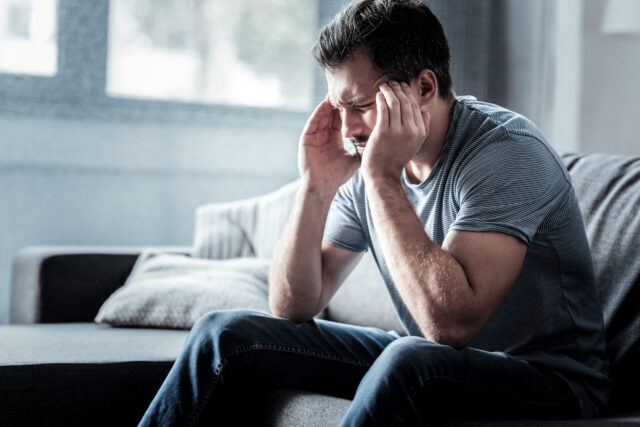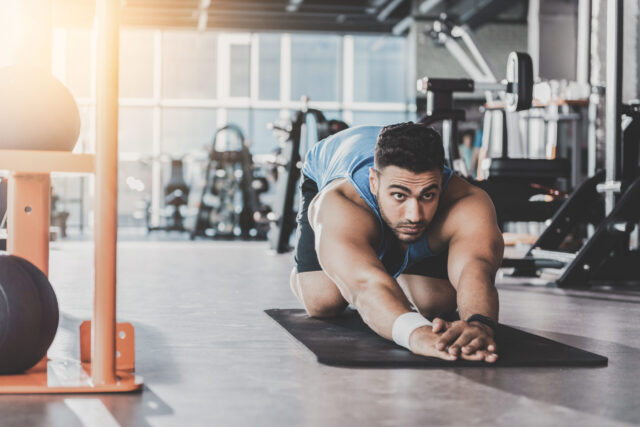Prostate cancer is the second most diagnosed cancer after skin cancer, and millions of men grapple with its diagnosis and treatment every year. These treatments can leave you with lingering side effects that affect your daily life and overall well-being.
But there’s good news! Physical therapy is a powerful tool for recovery and goes beyond traditional rehabilitation. Physical therapy offers a whole-body approach that helps you regain strength, manage side effects, and ultimately, get your quality of life back.
But first, what are the side effects of prostate cancer treatment?
What Are the Side Effects of Prostate Cancer Treatment?
Prostate cancer treatment, while life-saving, can come with side effects that can affect your
physical and emotional well-being.
Here are some common side effects of prostate cancer treatment:
- Urinary incontinence
- Pain
- Fatigue
- Emotional and psychological impact
How Can Physical Therapy Help With Prostate Surgery Recovery?
SportsMed Physical Therapy Regional Director of Operations and certified pelvic floor physical therapy Sweta Singh, PT, DPT, OCS shares: “Prehab before getting surgery and radiation treatment can help build the core muscles, teach you how to contract the muscles and prepare you for surgery and post-surgical recovery period to ensure a structured program which is effective.”
Aside from prehab, physical therapy can also help to reduce the following prostate surgery side effects significantly.
Urinary Incontinence
Incontinence is the loss of bladder control, which can range from occasional leaking to complete inability to hold urine.
Physical therapy can help manage urinary incontinence. Kegels, a common pelvic floor exercise, can help strengthen muscles that allow you to control urine flow.
Biofeedback therapy can also be helpful, providing visual or auditory feedback to help identify and contract the correct muscles.
Physical therapists can design a program of targeted exercises to strengthen these muscles, improve your continence, and reduce the frequency or severity of leaks.
In addition, they can teach behavioral modifications, such as bladder training and fluid management strategies.

Pain and Fatigue
You may experience pain in your pelvis, rectum, or genitals, depending on the type of treatment you received. Sweta shares: “Many prostate cancer patients experience lower back pain, which physical therapy is very effective at treating.”
Sometimes, you might feel nerve pain if any nerves were bumped or irritated during the procedure.
You might also feel really tired – this is called cancer-related fatigue, and surgery can make it worse.
Physical therapy can be a big help in managing post-surgery pain. Therapists can use manual therapy, which involves hands-on massage and stretching, to help ease pain and stiffness.
They’ll also help you with stretches and exercises that can make you more flexible, stronger, and reduce pain overall.
Exercise is particularly great for fighting fatigue. It might seem counterintuitive, but even moderate activity can give you more energy, improve your heart health, and make you feel better.
Your physical therapist will create a workout plan that’s safe for you and starts slow. It’ll gradually get more challenging, so you can build up your strength and energy while combating fatigue at the same time.
Other Ways Physical Therapy Helps
Here are some other ways physical therapy helps:
Scar Tissue Management and Mobility Exercises
After surgery, scar tissue can form, making it hard to move and causing discomfort. Physical therapists can use scar tissue massage to break down adhesions and help the tissue become more flexible and healthy.
Mobility exercises are also essential to keep the affected areas moving smoothly and prevent them from getting stiff.
Back Pain Treatment
Prostate surgery or inactivity due to the surgery can weaken the core and back muscles, causing poor posture and pain. Physical therapy treats this with targeted exercises to strengthen these muscle groups, improving spinal support and alignment.
General Fitness, Mobility, and Independence in Daily Life
Physical therapists can guide you through safe and effective aerobic exercises, like walking or stationary cycling, to improve heart health and general fitness.
Building strength in major muscle groups helps with everyday tasks like lifting, carrying, and maintaining balance. This is particularly important for older people who may be more prone to falls.
Stretching exercises led by a therapist can help prevent stiffness, maintain joint health, and improve the ability to perform daily activities like dressing, bathing, and household chores.

Lymphedema Prevention and Management
After prostate surgery, you might have lymphedema, which is when your limbs swell up because your lymphatic system gets blocked.
Physical therapists are trained in techniques to stop lymphedema from happening and to treat it if it does.
They do a special kind of massage called manual lymphatic drainage, and they’ll also recommend exercises that help the lymph fluid move better and reduce swelling.
Psychological Support and Stress Reduction Techniques
Prostate surgery can cause a lot of stress, anxiety, and even depression. But physical therapy isn’t just about your body – it can help your mind too!
A physical therapist can teach you how to perform guided relaxation, breathing exercises, and mindfulness. These techniques not only help you deal with mental stress but also give you a more positive outlook on life. So, remember, taking care of your mental health is just as important as taking care of your body after surgery.
Improving Overall Quality of Life
Physical therapy aims to improve your quality of life as you recover from prostate surgery.
Your physical therapist will work with you to reduce pain, improve your movement, and help you feel more confident.
They’ll give you a personalized rehabilitation plan to ensure that you receive the care and support you need to return to daily activities and enjoy a better quality of life.
Start Your Prostate Cancer Recovery Therapy with SportsMed PT
“Physical therapy is instrumental in recovering from prostate cancer surgery. Physical therapy after prostatectomy can decrease pain, improve your quality of life, teach you exactly what you need to do to continue to recover, address complications, and provide you with comprehensive rehabilitation.”
It should be part of your cancer care plan, addressing your needs and improving your overall well-being.
So, consider including physical therapy in your treatment for a better quality of life after prostate cancer surgery.
Schedule a consultation with a qualified therapist at SportMed Physical Therapy today to start your journey toward recovery.

